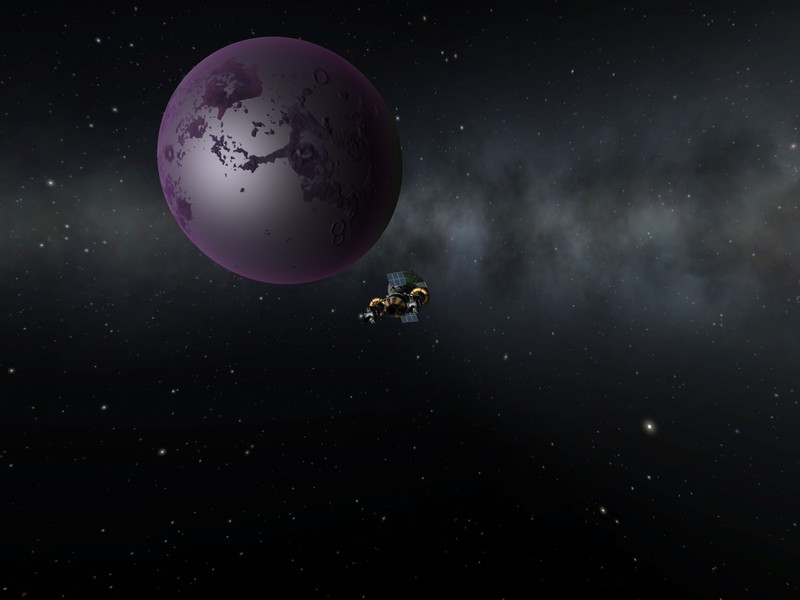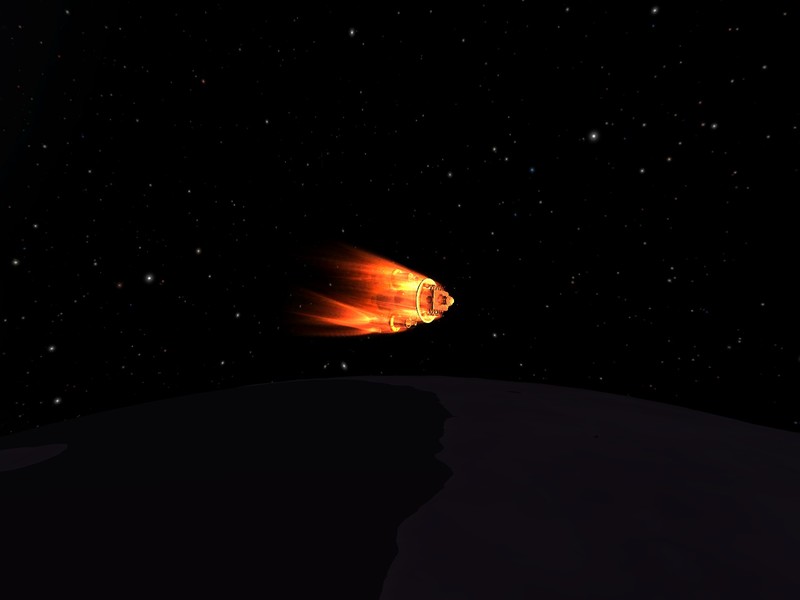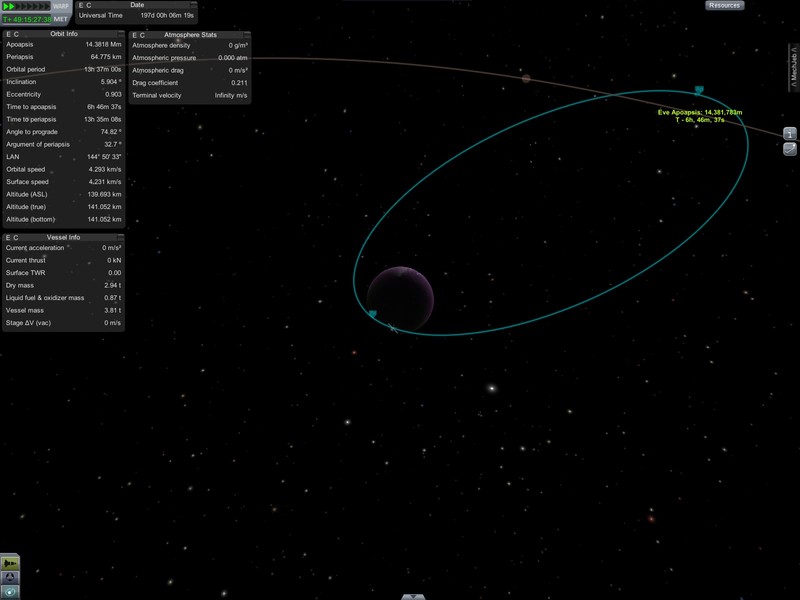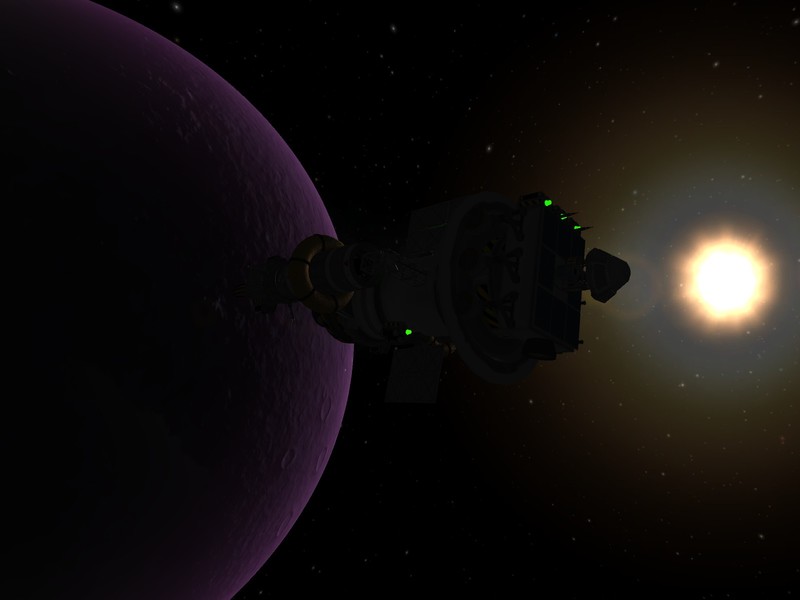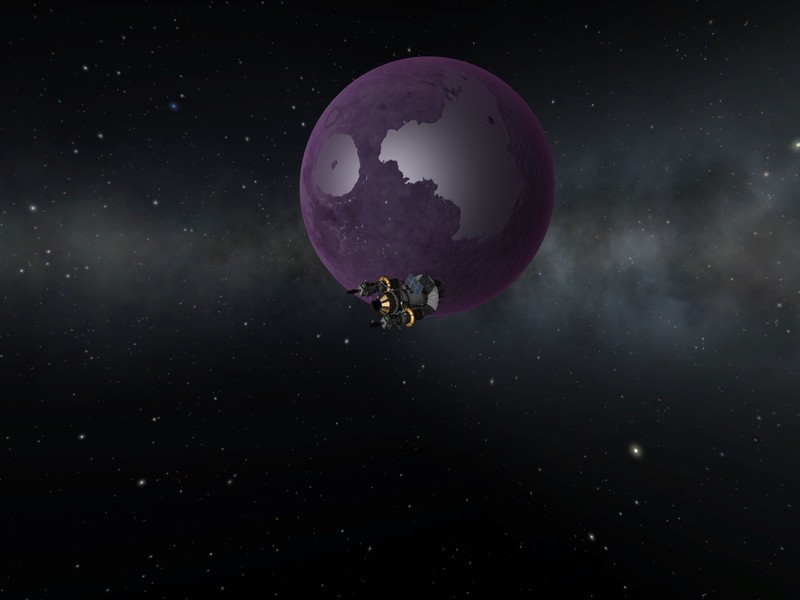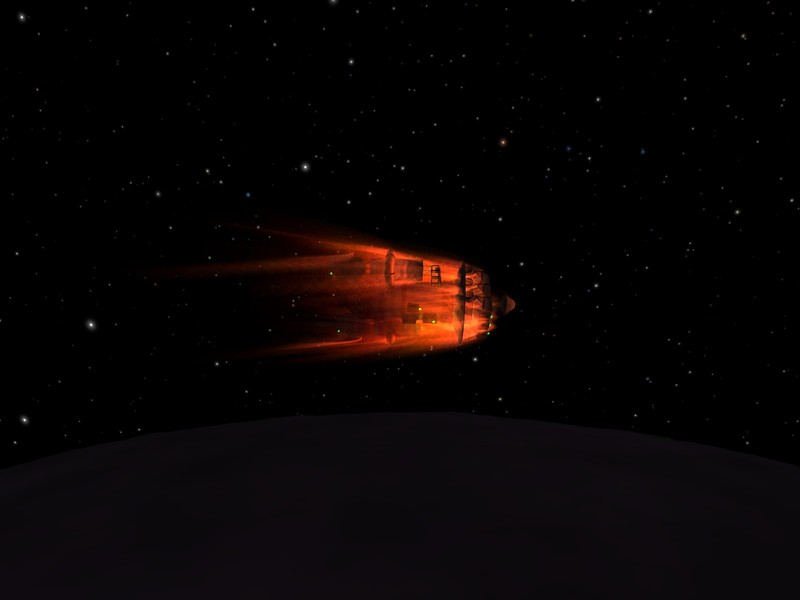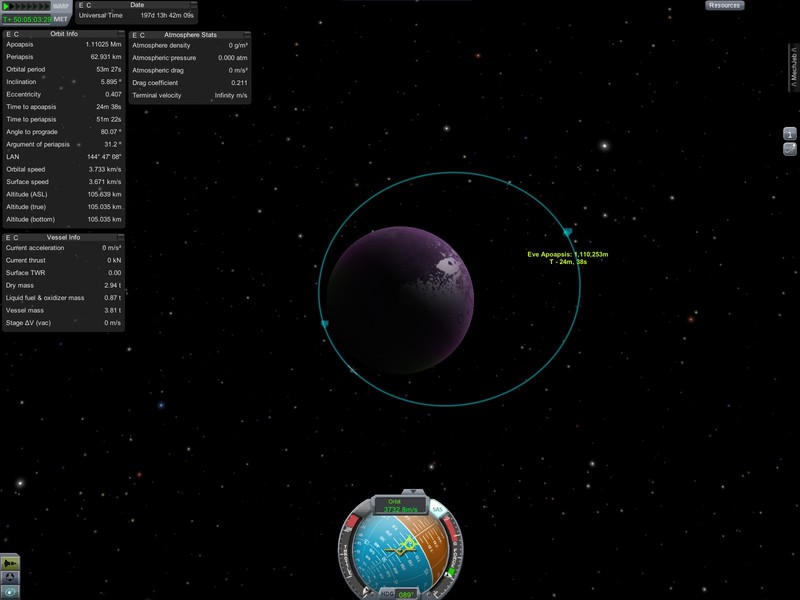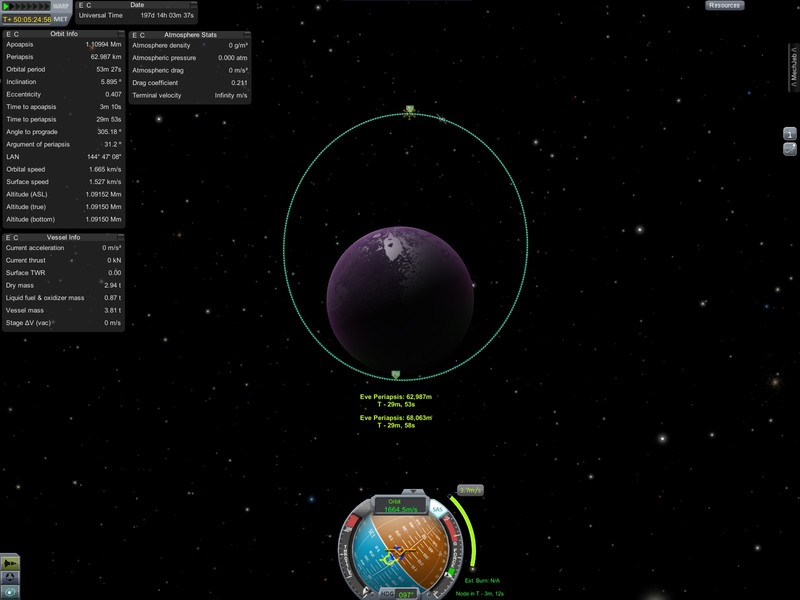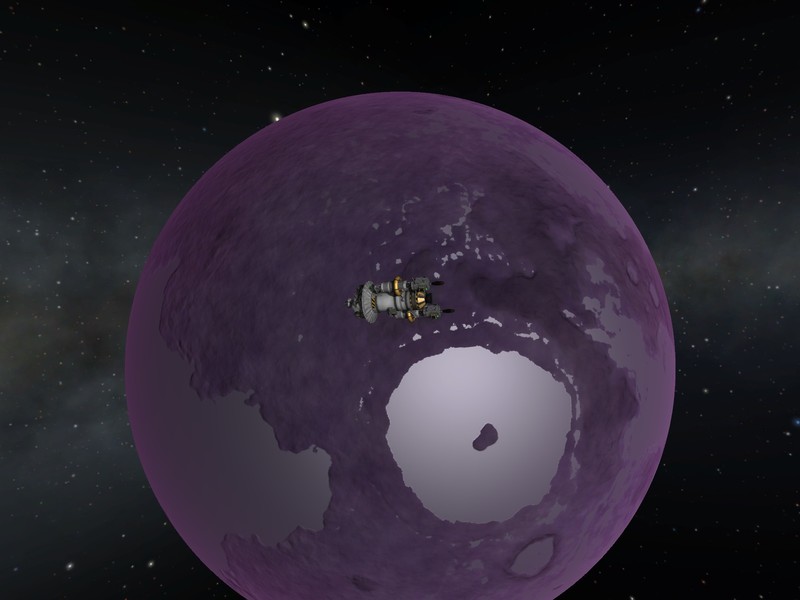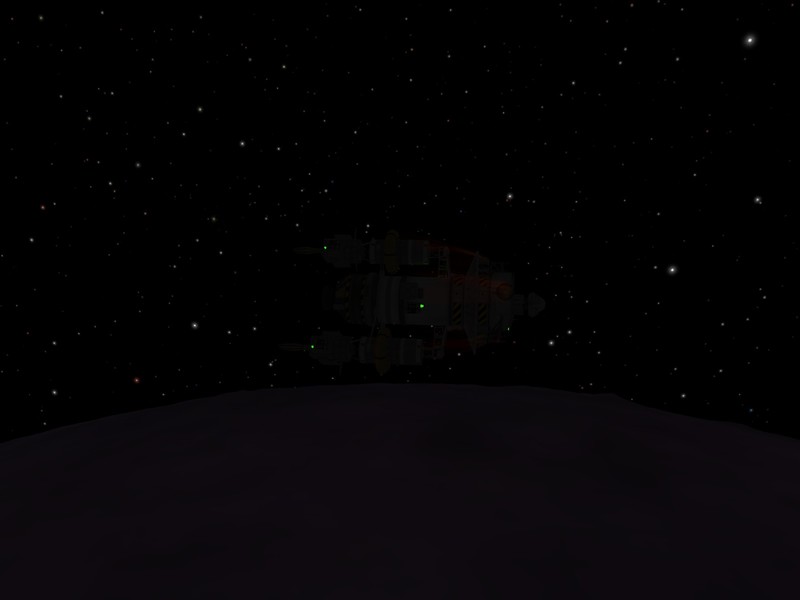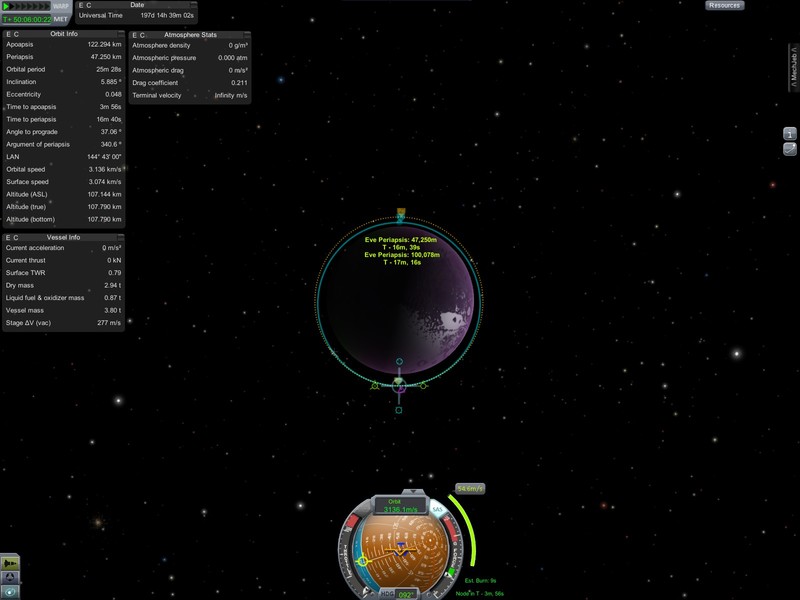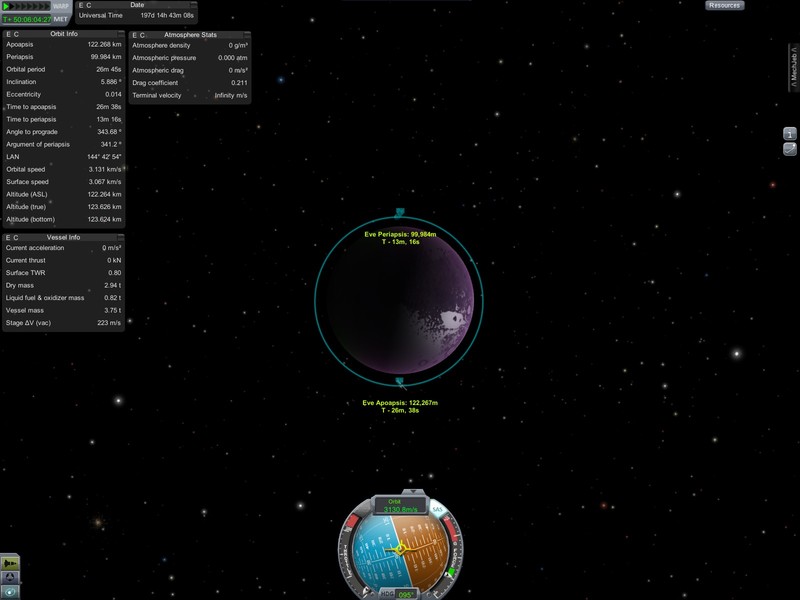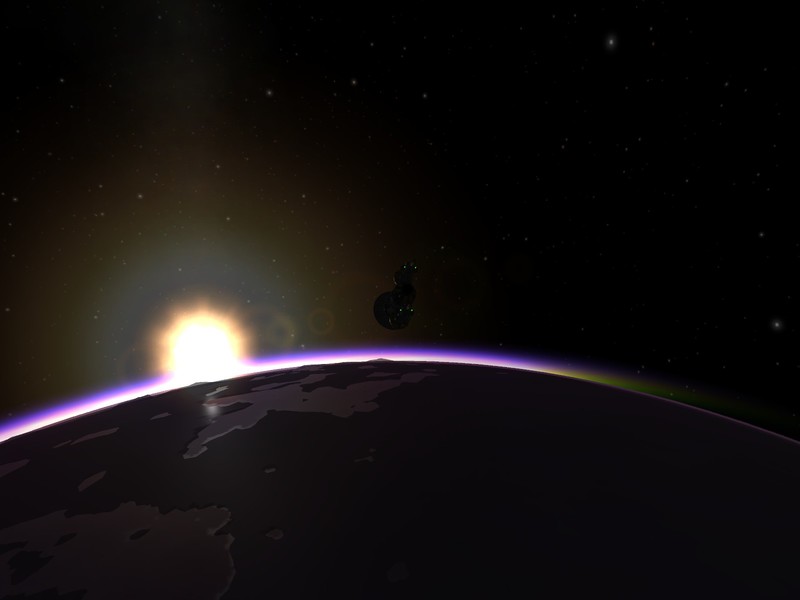Aerocapture and Aerobraking
According to the simulations, the current aerocapture trajectory would put the craft into an high-eccentricity elliptical orbit around Eve. Mission planners were confident the calculations were precise enough.
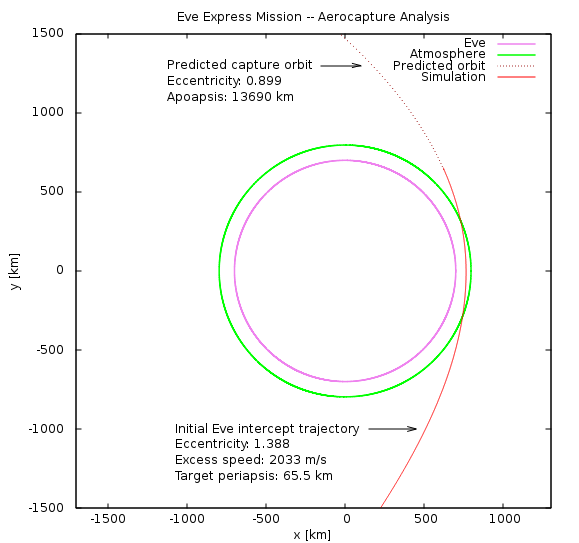
Eve's surface was glanced for the first time ever. Its purple color and extended oceans made this a fully-fledged alien world.
As the spacecraft moved swiftly into Eve's night side, all systems prepared for aerobraking. With a predicted periapsis velocity of over 5 km/s, this would be much more violent than aerobraking on Duna.
As Eve Express plunged into the thick atmosphere, it quickly turned into a blazing fireball. Even 65 km above the surface —Kerbin's atmosphere is an almost perfect vaccum at that alttiude—, Eve's atmosphere was dense enough to produce around 10 m/s^2 of deceleration ... and nice fireworks
As the spacecraft finally climbed back out of the atmosphere, it had lost around 500 m/s of speed —enough to be captured by Eve's substantial gravity.
The final orbit after aerocapture was slightly higher than predicted, with an apoapsis of 14380 km instead of 13690 km. Engineers attribute this difference to a slightly erroneous airspeed calculation which is still not capable of properly including the effects of orbital inclination.
Nonetheless, Eve Express was now in orbit around Eve.
While aerocapture was now completed, the spacecraft's eccentric orbit still had to be circularized before satellites could be deployed or landing attempted. Since the spacecraft had insufficient fuel for a circularization maneuver —as planned in the mission profile—, further aerobraking passes were performed.
Continuing on the aerocapture orbit with no further changes, the first pass reduced the apoapsis to 1100 km:
For the second pass, however, the updated predicitions demanded a minor orbital correction, as the periapsis had now fallen a little too low into the atmosphere.
Then, the second pass further reduced the apoapsis to 122 km.
After the last aerobraking pass, a brief burn was performed to finally bring the periapsis outside the atmosphere. This put Eve Express in its final near-circular orbit around Eve: a 122 km x 100 km orbit.
Eve Express had completed orbital insertion with a total delta-v expenditure since the Eve encounter of around 58 m/s, instead of the 1300 m/s required for a traditional powered insertion. Those are massive savings!
The final review of the complex maneuver concluded that the aerobraking calculations were sufficiently accurate for general application. Aerobraking was now a skill in the mission planners' bag.

The first part of the mission was complete.
Continue to Eve Landing ...
< Eve Transfer | Eve Landing >
